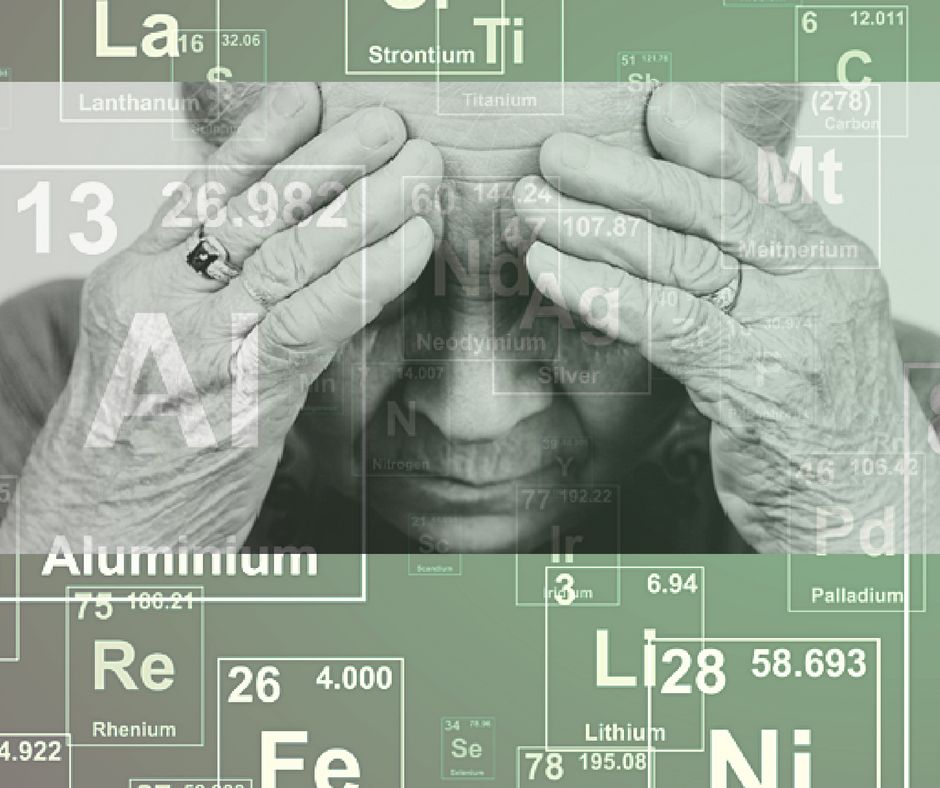Scientists Prove Link Between Aluminum and Early Onset Alzheimer’s Disease

In today’s world, aluminum is omnipresent, building up within our system from everyday products.
Now, we are learning that aluminum toxicity can manifest itself in alarming ways.
As many of us are aware, the human body is being bombarded with aluminum in everyday products. Many of our foods, vaccinations, medications, baby products, cosmetics, cleaning products and even soft furnishings contain aluminum and it appears that we are powerless to prevent the ever-increasing onslaught.
This is extremely worrying because, according to Professor Exley, a scientist from Keele University in Staffordshire, aluminum can accumulate in the body and has the potential to do harm wherever it ends up.
Link Between Early Onset Alzheimer’s Disease and Aluminum Now Proven
For many years, scientists have claimed that a link between aluminum and Alzheimer’s disease has existed. However, up until now, there has been little evidence to support their claims, which has left the scientific community confused.
However, according to scientists from Keele University in Staffordshire, recent studies have now confirmed that aluminum does play a role, in some, if not all, cases of Alzheimer’s disease.
In an article titled, Strong evidence linking Aluminum to Alzheimer’s, recently published on The Hippocratic Post website, Exley explained that:
“We already know that the aluminium content of brain tissue in late-onset or sporadic Alzheimer’s disease is significantly higher than is found in age-matched controls. So, individuals who develop Alzheimer’s disease in their late sixties and older also accumulate more aluminium in their brain tissue than individuals of the same age without the disease.
Even higher levels of aluminium have been found in the brains of individuals, diagnosed with an early-onset form of sporadic (usually late onset) Alzheimer’s disease, who have experienced an unusually high exposure to aluminium through the environment (e.g. Camelford) or through their workplace. This means that Alzheimer’s disease has a much earlier age of onset, for example, fifties or early sixties, in individuals who have been exposed to unusually high levels of aluminium in their everyday lives.”
His most recent study, published by the Journal of Trace Elements in Medicine and Biology in December 2016, titled: Aluminium in brain tissue in familial Alzheimer’s disease, is one of the many studies that he and his team have conducted on the subject of aluminum over the years. However, this study in particular is believed to be of significant value, because it is the first time that scientists have measured the level of aluminum in the brain tissue of individuals diagnosed with familial Alzheimer’s disease.
(Alzheimer’s disease or AD is considered to be familial if two or more people in a family suffer from the disease.)
According to their paper, the concentrations of aluminum found in brain tissue donated by individuals who died with a diagnosis of familial AD, was the highest level ever measured in human brain tissue.
What Do Their Findings Mean?
To explain the team’s findings in more depth, Exley wrote:
“This new research may suggest that these genetic predispositions to early onset Alzheimer’s disease are linked in some way to the accumulation of aluminium (through ‘normal’ everyday human exposure) in brain tissue.
Ageing is the main risk factor for Alzheimer’s disease and aluminium accumulates in human brain tissue with ageing. Environmental or occupational exposure to aluminium results in higher levels of aluminium in human brain tissue and an early onset form of sporadic Alzheimer’s disease. The genetic predispositions which are used to define familial or early-onset Alzheimer’s disease also predispose individuals to higher levels of brain aluminium at a much younger age.
Aluminium is accepted as a known neurotoxin, for example being the cause of dialysis encephalopathy, and its accumulation in human brain tissue at any age can only contribute to any ongoing disease state or toxicity.”
How to Reduce the Body’s Burden of Aluminum
As a solution, Professor Exley has suggested that we aim to reduce the accumulation of aluminum in our brains through everyday activities. One of the ways that Professor Exley has suggested to help reduce the accumulation of aluminum in the body is by drinking a silicon-rich mineral water. According to Exley, silicon protects the body against the toxicity of aluminum, and by drinking a silicon-rich mineral water, his studies have revealed that the aluminum is removed from the human body through the excretion of urine.
See: Silicon-Rich Mineral Water as a Non-Invasive Test of the Aluminum Hypothesis in ‘Alzheimer’s Disease
Readers will find more information on the dangers of aluminum and the research carried out by Professor Christopher Exley listed on the Children’s Medical Safety Research Institute (CMSRI) website.
Complete article with background information and information about aluminum in children can be found at: http://www.greenmedinfo.com/blog/scientists-prove-link-between-aluminum-and-early-onset-alzheimer-s-disease?utm_content=44158910&utm_medium=social&utm_source=facebook.




